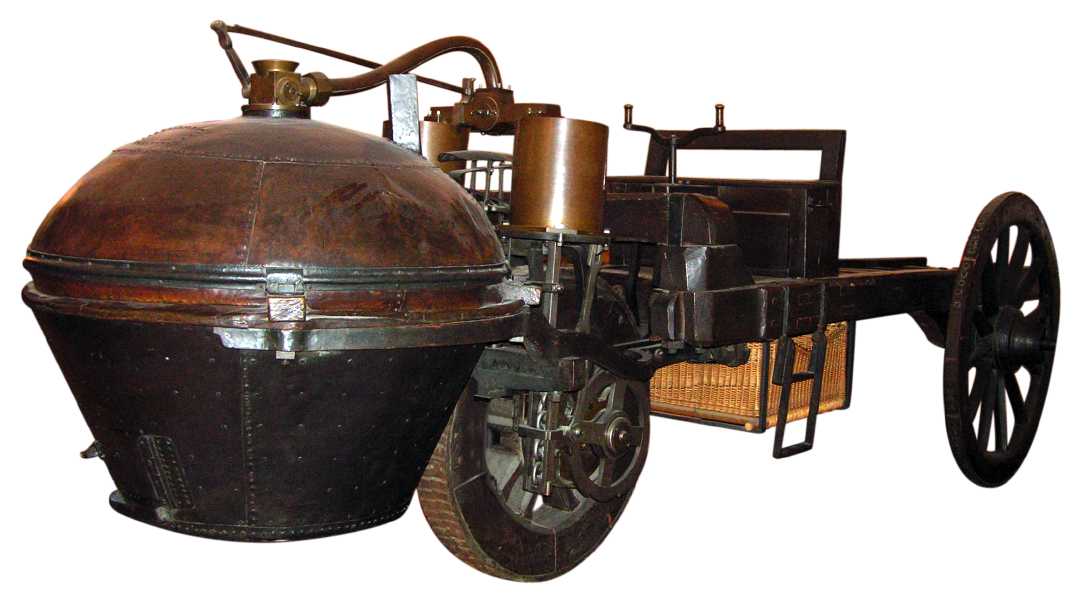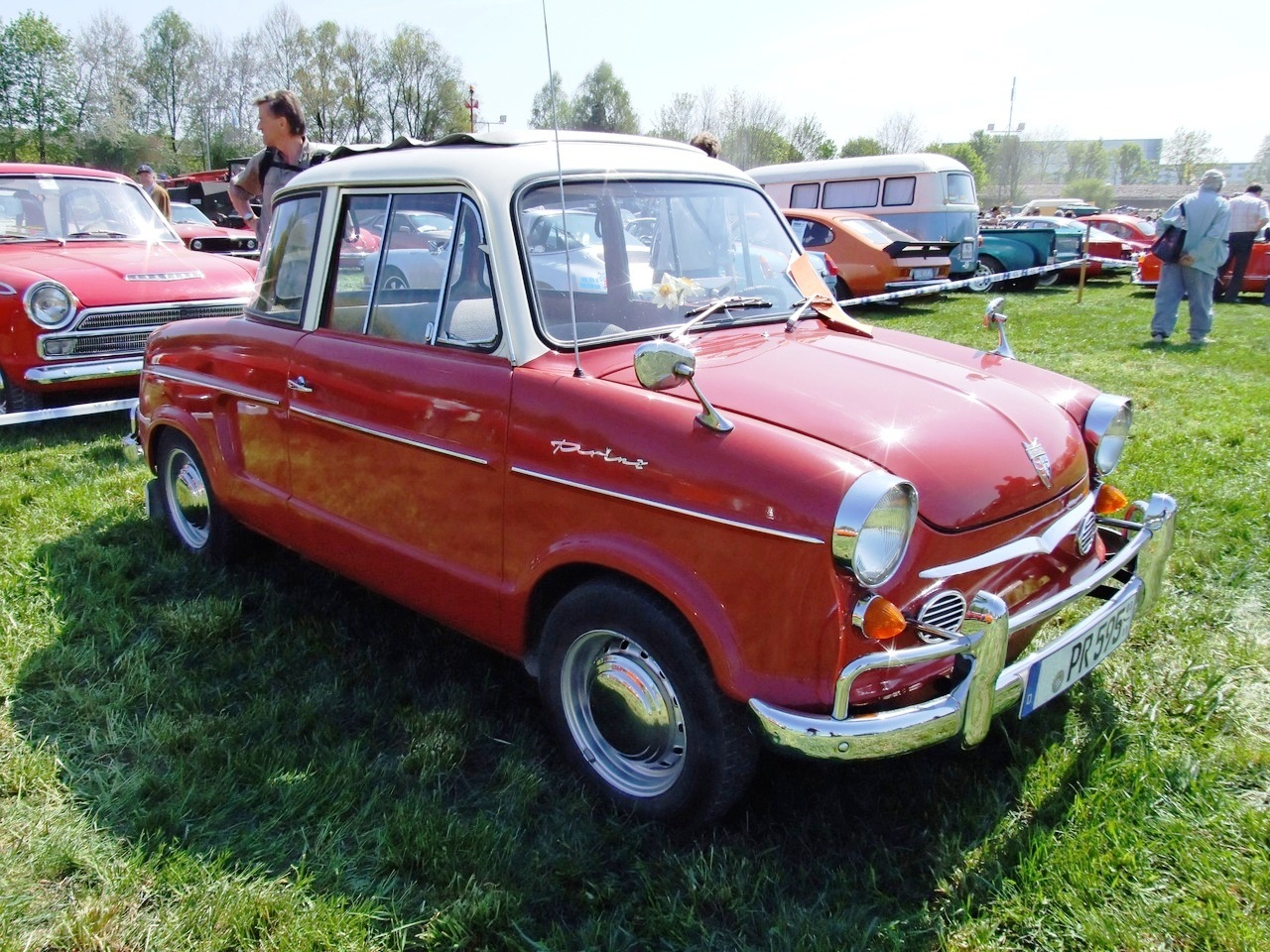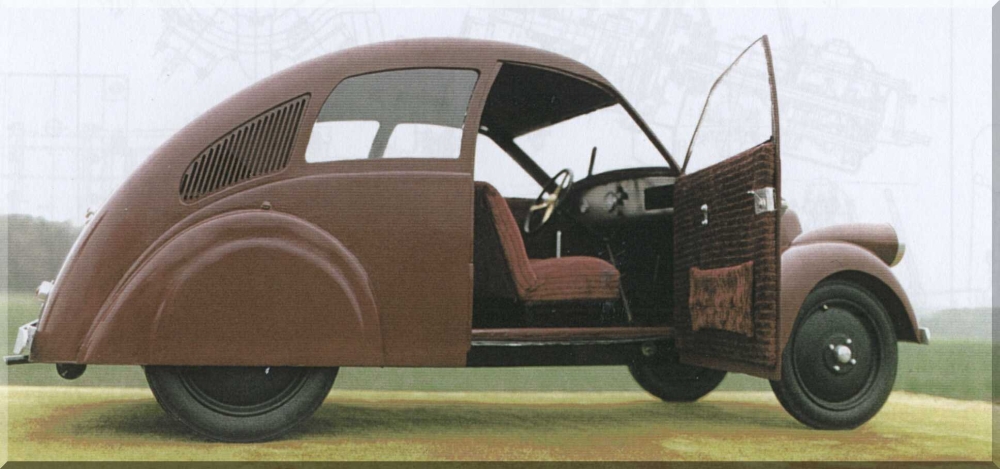|
BAW Jinggangshan
The Jinggangshan () was the first passenger car produced by the Chinese automobile manufacturer Beijing Automobile Works (BAW) and sold under the Jinggangshan brand from 1958 to 1960. History The Beijing-based company BAW was founded in 1953 with Soviet assistance. BAW initially manufactured accessories for Chinese vehicles, mainly carburetors, fuel pumps, headlights and smaller sheet metal parts. In 1958 the Great Leap Forward campaign began in China, one of the goals of which was to catch up with China's lagging behind the industrialized western countries. The effects of this initiative could also be felt in the automotive sector.Maurice A. Kelly: ''Russian Motor Vehicles: Soviet Limousines 1930-2003'', Veloce Publishing Ltd, 2011, , S. 75. Starting in 1958, several Chinese plants began to construct passenger cars for civil use. For the mid-range segment, three different designs were created in three plants this year. Shanghai Auto Works developed the Fenghuang, later known as ... [...More Info...] [...Related Items...] OR: [Wikipedia] [Google] [Baidu] |
Sedan (automobile)
A sedan or saloon (British English) is a automobile, passenger car in a three-box styling, three-box configuration with separate compartments for an engine, passengers, and cargo. The first recorded use of the word "sedan" in reference to an automobile body occurred in 1912. The name derives from the 17th-century Litter (vehicle), litter known as a sedan chair, a one-person enclosed box with windows and carried by porters. Variations of the sedan style include the close-coupled sedan, club sedan, convertible sedan, fastback sedan, hardtop sedan, notchback sedan, and sedanet/sedanette. Definition A sedan () is a car with a closed body (i.e. a fixed metal roof) with the engine, passengers, and cargo in separate compartments. This broad definition does not differentiate sedans from various other car body styles, but in practice, the typical characteristics of sedans are: * a Pillar (car), B-pillar (between the front and rear windows) that supports the roof * two rows of seats ... [...More Info...] [...Related Items...] OR: [Wikipedia] [Google] [Baidu] |
GAZ-21
The GAZ M21 Volga is an automobile produced in the Soviet Union by GAZ (Gorkovsky Avtomobilniy Zavod, in English "Gorky automobile factory") from 1956 to 1970. The first car to carry the Volga name, it was developed in the early 1950s. Volgas were built with high ground clearance (which gives it a specific "high" look, contrary to "low-long-sleek" look of Western cars of similar design), rugged suspension, strong and forgiving engine, and rustproofing on a scale unheard of in the 1950s. The Volga was stylistically in line with the major American manufacturers of the period in which it was introduced, and incorporated such then-luxury features as the reclining front seat, cigarette lighter, heater, windshield washer and three-wave radio. When in 1959 the six-cylinder line of GAZ cars was discontinued, GAZ M-21 Volga became the biggest and most luxurious car officially sold to individual owners in the USSR in large quantities; though its very high price made it unavailable for m ... [...More Info...] [...Related Items...] OR: [Wikipedia] [Google] [Baidu] |
Cars Introduced In 1958
A car or automobile is a motor vehicle with wheels. Most definitions of ''cars'' say that they run primarily on roads, seat one to eight people, have four wheels, and mainly transport people instead of goods. The year 1886 is regarded as the birth year of the car, when German inventor Carl Benz patented his Benz Patent-Motorwagen. Cars became widely available during the 20th century. One of the first cars affordable by the masses was the 1908 Model T, an American car manufactured by the Ford Motor Company. Cars were rapidly adopted in the US, where they replaced animal-drawn carriages and carts. In Europe and other parts of the world, demand for automobiles did not increase until after World War II. The car is considered an essential part of the developed economy. Cars have controls for driving, parking, passenger comfort, and a variety of lights. Over the decades, additional features and controls have been added to vehicles, making them progressively more complex. T ... [...More Info...] [...Related Items...] OR: [Wikipedia] [Google] [Baidu] |
Cars Of China
A car or automobile is a motor vehicle with wheels. Most definitions of ''cars'' say that they run primarily on roads, seat one to eight people, have four wheels, and mainly transport people instead of goods. The year 1886 is regarded as the birth year of the car, when German inventor Carl Benz patented his Benz Patent-Motorwagen. Cars became widely available during the 20th century. One of the first cars affordable by the masses was the 1908 Model T, an American car manufactured by the Ford Motor Company. Cars were rapidly adopted in the US, where they replaced animal-drawn carriages and carts. In Europe and other parts of the world, demand for automobiles did not increase until after World War II. The car is considered an essential part of the developed economy. Cars have controls for driving, parking, passenger comfort, and a variety of lights. Over the decades, additional features and controls have been added to vehicles, making them progressively more complex. Th ... [...More Info...] [...Related Items...] OR: [Wikipedia] [Google] [Baidu] |
BAW Vehicles
Beijing Automobile Works Co., Ltd. (BAW) () is a Chinese car manufacturer based in Beijing and a subsidiary of BAIC Group. BAW produces light off-road vehicles and trucks. BAW produces civilian as well as military vehicles. History Beijing Automobile Works was founded in 1953 as The First Accessory Factory and was renamed to Beijing Automobile Works in 1958. In 1987 the company merged with Beijing Motorcycle Company to become the Automobile and Motorcycle United Company (BAM). The modern company, Beijing Automobile Works Co.,Ltd (BAW), was founded in 2001 and incorporates the original Beijing Automobile Works, as well as the first Chinese automobile joint venture Beijing Jeep, Beijing Automobile Assembly and Foton Motor. Products Passenger cars * Yuanbao/Yanling S3 Off-road * Yusheng 007 (Isheng 007) * Luba/Youxian (Based on the Toyota Land Cruiser Prado) *Qishi (Based on the Jeep Cherokee (XJ), a licensed extended production code named BJ2021.) *BJ2025/BJ6430/BJ6440 Leichi ... [...More Info...] [...Related Items...] OR: [Wikipedia] [Google] [Baidu] |
Volkswagen Type 3
The Volkswagen Type 3 is a compact car manufactured and marketed by Volkswagen from 1961-1973. Introduced at the 1961 Frankfurt Motor Show, ''Internationale Automobil-Ausstellung (IAA)'', the Type 3 was marketed as the Volkswagen 1500 and later as the Volkswagen 1600, in three body styles: two-door Notchback, Fastback, and Station Wagon, the latter marketed as the 'Squareback' in the United States. The Type 3 diversified Volkswagen's product range beyond the existing models – the Type 1 Beetles, Type 14 Karmann Ghia, Type 2 vans and pickups – while retaining Volkswagen's hallmark engineering features: the air-cooled rear-engine, rear-wheel drive train, body-on chassis construction with a backbone chassis integrated into the car's floorpan), as well as torsion bar front and rear suspension. Despite using the Beetle's wheelbase, the Type 3 was conceived as a larger car, offering a larger engine and increased cargo and passenger volume — the latter from ... [...More Info...] [...Related Items...] OR: [Wikipedia] [Google] [Baidu] |
NSU Prinz
The NSU Prinz (Prince) is an automobile which was produced in West Germany by the NSU Motorenwerke AG from 1958 to 1973. NSU Prinz I, II & III The first post-war NSU car, the Prinz I, was launched at the Frankfurt Motor Show in September 1957 accompanied by the advertising slogan "Fahre Prinz und Du bist König" ''("Drive a Prince and you're a king")''. After a pilot run of 150 preproduction cars, volume production began in March 1958. The Prinz I was available as a 2-door saloonMichael Sedgwick & Mark Gillies, ''A-Z of Cars 1945-1970'', page 145 featuring an upright roof line and seating for four people. The doors opened wide enough to permit reasonable access even to the rear seats, although leg room was severely restricted if attempting to accommodate four full sized adults. In addition to a luggage compartment accessed via a hatch at the front of the car and shared with the spare wheel and fuel filler, there was a narrow but deep full width space behind the rear seat suffi ... [...More Info...] [...Related Items...] OR: [Wikipedia] [Google] [Baidu] |
Volkswagen Beetle
The Volkswagen Beetle—officially the Volkswagen Type 1, informally in German (meaning "beetle"), in parts of the English-speaking world the Bug, and known by many other nicknames in other languages—is a two-door, rear-engine economy car, intended for five occupants (later, Beetles were restricted to four people in some countries), that was manufactured and marketed by German automaker Volkswagen (VW) from 1938 until 2003. The need for a ''people's car'' ( in German), its concept and its functional objectives were formulated by the leader of Nazi Germany, Adolf Hitler, who wanted a cheap, simple car to be mass-produced for his country's new road network (Reichsautobahn). Members of the National Socialist party, with an additional dues surcharge, were promised the first production, but the Spanish Civil War shifted most production resources to military vehicles to support the Nationalists under Francisco Franco. Lead engineer Ferdinand Porsche and his team took until 1938 ... [...More Info...] [...Related Items...] OR: [Wikipedia] [Google] [Baidu] |
Chosun Ilbo
''The Chosun Ilbo'' (, ) is a daily newspaper in South Korea and the oldest daily newspaper in the country. With a daily circulation of more than 1,800,000, the ''Chosun Ilbo'' has been audited annually since the Audit Bureau of Circulations was established in 1993. ''Chosun Ilbo'' and its subsidiary company, Digital Chosun, operates the ''Chosun.com'' news website, which also publishes web versions of the newspaper in English, Chinese, and Japanese. The paper is considered a newspaper of record for South Korea. History The ''Chosun Ilbo'' Establishment Union was created in September 1919 while the ''Chosun Ilbo'' company was founded on 5 March 1920 by Sin Sogu. The newspaper was critical of, and sometimes directly opposed to, the actions of the Japanese government during Japanese colonial rule (1910–1945). On 27 August 1920, the ''Chosun Ilbo'' was suspended after it published an editorial criticizing what it said was the use of excessive force by the Japanese police a ... [...More Info...] [...Related Items...] OR: [Wikipedia] [Google] [Baidu] |
Dongfanghong BJ760
The Dongfanghong BJ760 () is an executive sedan produced by BAW. Development started as a licensed copy of the GAZ-21 Volga with asssistance from the Soviets sharing chassis units, drawings and blueprints for reference, and was produced from 1960 to 1969 with a total of 238 units produced. It replaced the Jinggangshan sedan by BAW. During development, the car was named Xinghuo 76 (Spark 76), but was later changed to Dongfanghong for the production version. The name Dongfanghong means " The East is Red" and refers to a patriotic song of the Chinese Communist Party. The name has been used by multiple companies for branding and product names. History In 1958, the Great Leap Forward campaign began in China, the goal of which was to catch up with China's lagging behind Western countries. The consequences of this initiative also affected the automotive sector and since 1958, several Chinese factories began to produce passenger cars with the most well-known being the Dongfanghong BJ7 ... [...More Info...] [...Related Items...] OR: [Wikipedia] [Google] [Baidu] |
Petrol Engine
A petrol engine (gasoline engine in American English) is an internal combustion engine designed to run on petrol (gasoline). Petrol engines can often be adapted to also run on fuels such as liquefied petroleum gas and ethanol blends (such as ''E10'' and ''E85''). Most petrol engines use spark ignition, unlike diesel engines which typically use compression ignition. Another key difference to diesel engines is that petrol engines typically have a lower compression ratio. Design Thermodynamic cycle Most petrol engines use either the four-stroke Otto cycle or the two-stroke cycle. Petrol engines have also been produced using the Miller cycle and Atkinson cycle. Layout Most petrol-powered piston engines are straight engines or V engines. However, flat engines, W engines and other layouts are sometimes used. Wankel engines are classified by the number of rotors used. Compression ratio Cooling Petrol engines are either air-cooled or water-cooled. Ignition Petrol e ... [...More Info...] [...Related Items...] OR: [Wikipedia] [Google] [Baidu] |
Dongfeng CA71
The Dongfeng CA71 () is a medium-sized limousine made by the Chinese automobile manufacturer First Automotive Works (FAW) and produced in small numbers in 1958. It was the first passenger car to be produced entirely in China.Beijing Automobile Museum (Hrsg.): Red Flag. 60 years of Chinese Automobile History. Broschüre zur Ausstellung in der Cité de l’Automobile, Schlumpf Collection, Mulhouse (6. November 2014 bis 30. März 2015) History of development The Dongfeng CA71 was developed by FAW in Changchun (Manchuria). FAW was founded in 1953 with technical and financial support from the Soviet Union. It primarily produced commercial vehicles, especially heavy trucks based on the Soviet model. In 1958 China launched the Great Leap Forward Campaign, which was aimed at catching up with the Western industrialized countries. From 1958, several Chinese plants, including FAW began to design passenger cars for civilian use. The Dongfeng CA71 was used for a number of propaganda campaig ... [...More Info...] [...Related Items...] OR: [Wikipedia] [Google] [Baidu] |
.jpg)

_%22Volga%22_in_Moscow_(front_view).jpg)


_front-right_2016_Beijing_Auto_Museum.jpg)



